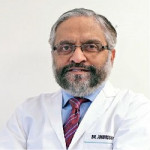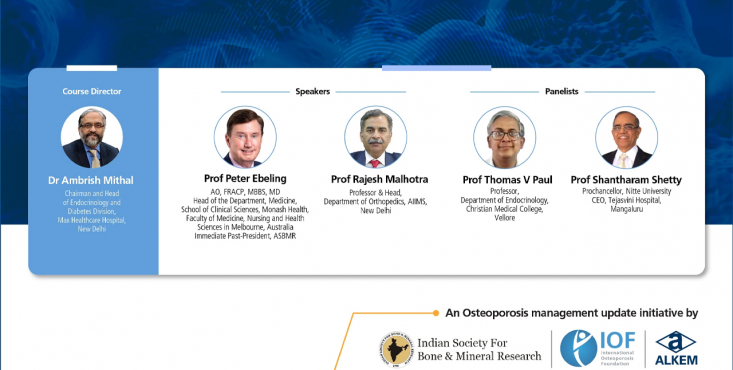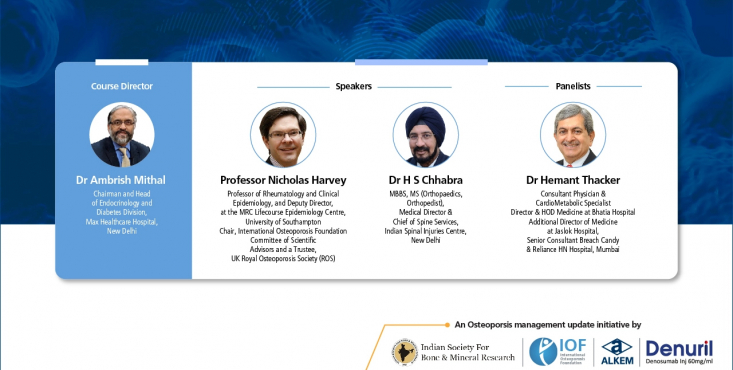
Webinar- Update on Osteoporosis Session 5- A Discussion
Osteoporosis is a disease process that thins the bones to a point that the bone is not strong enough to withstand everyday stress and it breaks/fractures. The pathophysiology of osteoporosis is due to the function of osteoclast activity versus osteoblast activity. In osteoporosis, the osteoclasts start to outwork the osteoblasts. Osteoblasts build up the matrix of the spongy bone by using the excessive amount of calcium and phosphorus present in the bone. The risk factors for developing osteoporosis include low calcium and vitamin D intake, older age, smoking, regular alcohol usage, sedentary lifestyle or immobility, genetics, being underweight (BMI less than 19), thin, small frame, medications (glucocorticoids and anticonvulsants). On the other hand, nursing care for osteoporosis includes safety (preventing further fractures), education on medication and prevention, assessing for signs and symptoms/risk factors, and monitoring for side effects of medications. In this video, let us have a quick glance at the various aspects of osteoporosis and take opinions from the experts to prevent it.
Panelists

Dr.Ambrish Mithal
Chairman & Head - Endocrinology & Diabetology, Max Healthcare (Pan Max)

Dr.Ramneek Mahajan
Director (Orthopaedics & Joint Replacement) & Head of Unit-1, Max Smart Super Speciality Hospital, Saket

Dr.Prof. Manju Chandran
Senior Consultant & Director, Osteoporosis and Bone Metabolism Unit, Singapore General Hospital (SGH)

Dr.J Dheenadhayalan
Senior Consultant, Complex Trauma, Upper Limb Surgery & Limb Reconstructive Surgery, Ganga Medical Centre & Hospitals, Coimbatore, Tamil Nadu

Dr.Prof Rajesh Khadgawat
Professor, Dept. of Endocrinology, All India Institute of Medical Sciences, New Delhi
Webinar- Update on Osteoporosis Session 5- A Discussion
Osteoporosis is a disease process that thins the bones to a point that the bone is not strong enough to withstand everyday stress and it breaks/fractures. The pathophysiology of osteoporosis is due to the function of osteoclast activity versus osteoblast activity. In osteoporosis, the osteoclasts start to outwork the osteoblasts. Osteoblasts build up the matrix of the spongy bone by using the excessive amount of calcium and phosphorus present in the bone. The risk factors for developing osteoporosis include low calcium and vitamin D intake, older age, smoking, regular alcohol usage, sedentary lifestyle or immobility, genetics, being underweight (BMI less than 19), thin, small frame, medications (glucocorticoids and anticonvulsants). On the other hand, nursing care for osteoporosis includes safety (preventing further fractures), education on medication and prevention, assessing for signs and symptoms/risk factors, and monitoring for side effects of medications. In this video, let us have a quick glance at the various aspects of osteoporosis and take opinions from the experts to prevent it.
Panelists

Dr.Ambrish Mithal
Chairman & Head - Endocrinology & Diabetology, Max Healthcare (Pan Max)

Dr.Ramneek Mahajan
Director (Orthopaedics & Joint Replacement) & Head of Unit-1, Max Smart Super Speciality Hospital, Saket

Dr.Prof. Manju Chandran
Senior Consultant & Director, Osteoporosis and Bone Metabolism Unit, Singapore General Hospital (SGH)

Dr.J Dheenadhayalan
Senior Consultant, Complex Trauma, Upper Limb Surgery & Limb Reconstructive Surgery, Ganga Medical Centre & Hospitals, Coimbatore, Tamil Nadu

Dr.Prof Rajesh Khadgawat
Professor, Dept. of Endocrinology, All India Institute of Medical Sciences, New Delhi
CONNECT WITH US

.jpg)


